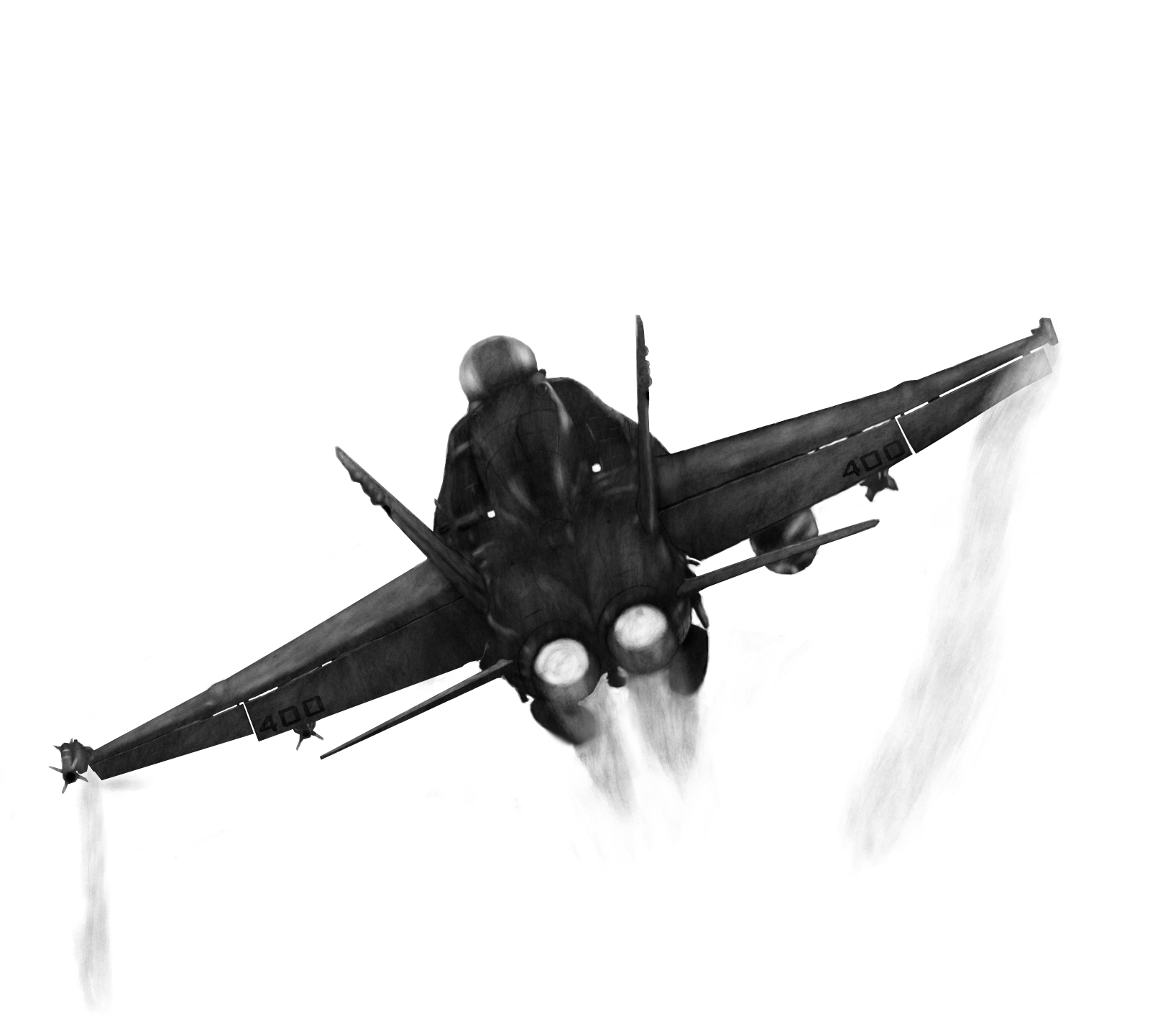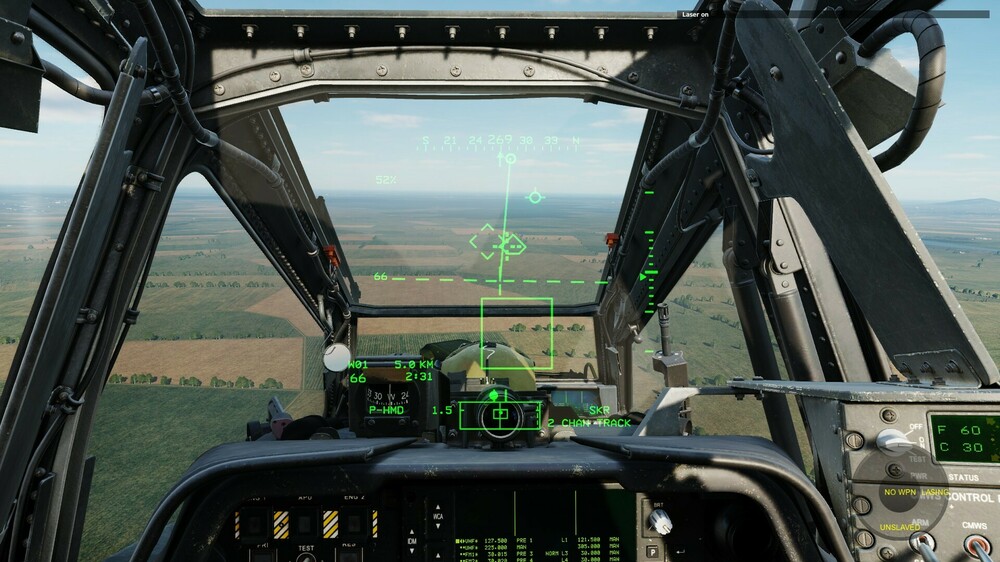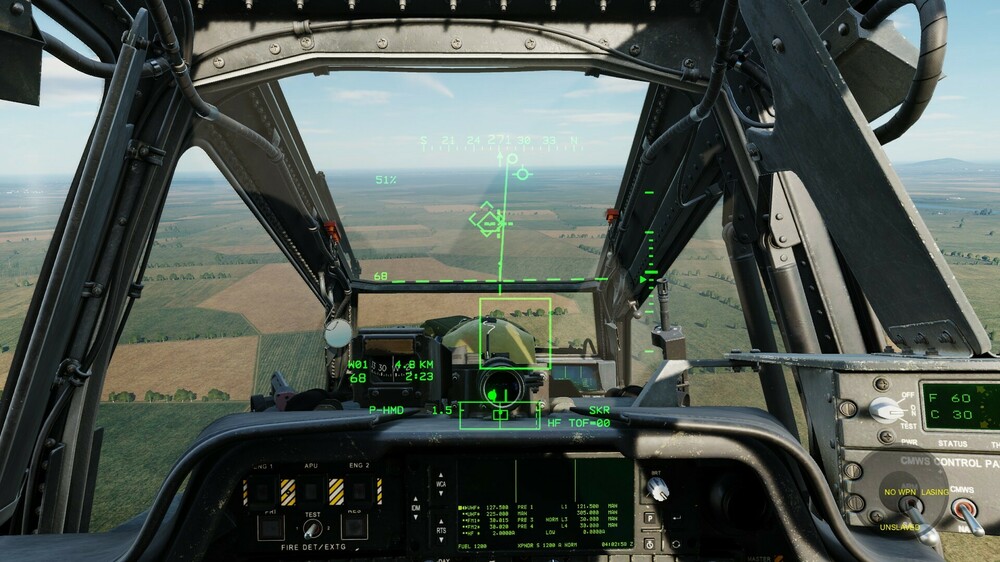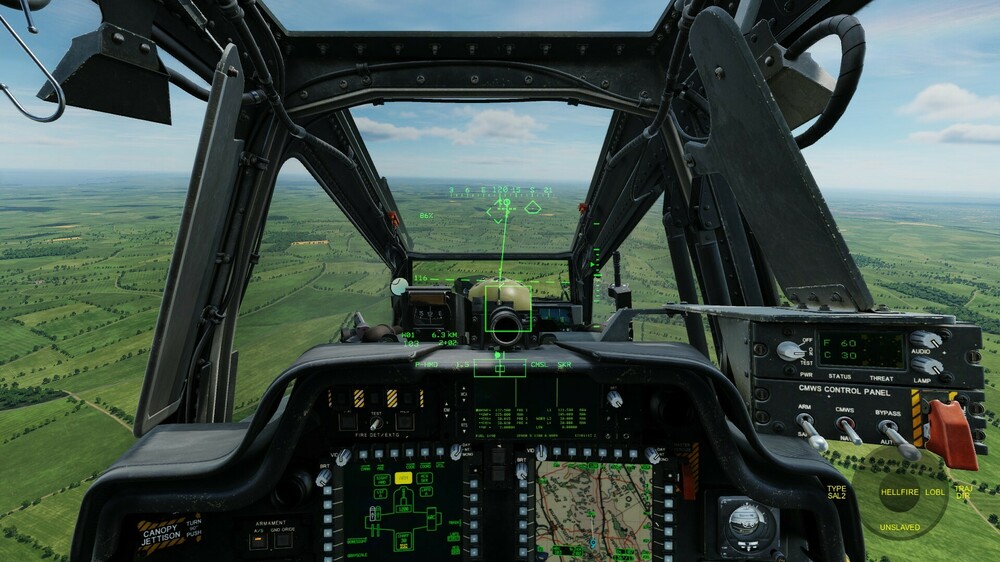-
Posts
703 -
Joined
-
Last visited
Content Type
Profiles
Forums
Events
Everything posted by NeedzWD40
-

not a bug SKR option not available anymore.
NeedzWD40 replied to AndreNL's topic in Bugs and Problems
Yes. But we do have a legit bug that I found (and will document): AGM-114L can also be used as a source with SKR, which works right now, but displays the invalid source logic. -
Yes. Single engine performance is severely inhibited in most dual engine helicopters as a rule. Consider the engine in question: T700-GE-701C offers a 2.5 minute contingency only for single engine operations (aka emergency) with a SHP of 1940. The 10 minute maximum is 1890 and the max continuous is 1662. Assuming you're doing the 10 minute with two engines, you've got 3780 SHP to work with. Even with the emergency limit, you're missing out on 1840 SHP - that's a lot of power to suddenly not have. The other dual engine helicopters are similarly inhibited in single engine conditions. It's not a question of security, but basic physics. Ditch weapons, tell George to quit eating so many cheeseburgers, and get rolling for that sweet translational lift.
-

not a bug SKR option not available anymore.
NeedzWD40 replied to AndreNL's topic in Bugs and Problems
Behavior in this track: Friendly unit is lasing on code 1688. Take off, then arm and press MSL on WPN page. SKR will not work; displayed in white and with a ?, indicating an invalid condition. Deselect missiles on page, WAS missiles instead, seeker acquires. SKR becomes valid ACQ source and is operable and selectable. Set self code to B, bring up George interface, get him to a different target, lase. Missile mode to RIPL. Fire first missile, then next missile goes live and ACQ cross goes to second missile SKR source. Fire. De-WAS missiles, SKR no longer valid and displays SKR? in ACQ box. ETA: Checked my references and this is correct behavior. If the missiles are not actively tracking (WAS'd, valid laser source), then SKR cannot be a valid ACQ source. AH-64D ACQ SKR.trk -

not a bug SKR option not available anymore.
NeedzWD40 replied to AndreNL's topic in Bugs and Problems
Because you're not doing it right. Selecting missiles with the WPN page MSL doesn't action them, it only selects them for admin purposes. Therefore, the SKR won't work because the missiles aren't "live" - you must use the weapon action switch OR have your CPG action the missiles for SKR to be a valid acquisition source. Now, whether or not this behavior is correct is a different matter. -
Have you tried consistently resetting the INUs?
-

not a bug SKR option not available anymore.
NeedzWD40 replied to AndreNL's topic in Bugs and Problems
Because it works, just differently than it used to. 1. Crewmember actions SAL missiles (front or back). 2. Missile acquires laser. 3. Go to ACQ menu. Observe "SKR" is not white nor has "?" appended. 4. Select SKR as ACQ source. 5. ACQ cross points to SKR source. -

must be on same preset Datalink FARM - gives me XMIT NAK
NeedzWD40 replied to fjacobsen's topic in DCS: AH-64D
PP is the only one that works for me currently. -

no bug Two missiles instead of one!!!
NeedzWD40 replied to flavnet's topic in DCS: Ka-50 Black Shark 3
What's your burst setting set to? -
Sure, but with that comes understanding the capabilities of the threat. For example, various iterations of the SA-6 system have a minimum engagement altitude of 100-200m, which could give an ATKHB an advantage in eliminating the battery, particularly if the battery is unprepared for an attack from helicopters - which was the case for Task Force Normandy's target. An attack by helicopters was not anticipated, and thus relevant defenses were not in place. The same can be true in the real world and we've seen many examples of such being exploited, oftentimes contrary to doctrine. "What resources are available to accomplish the objective with the least amount of risk?" is the question that will be asked. That won't likely be an ATKHB, but it will be considered in the lexicon of available options, with risk vs reward weighed to make a proper decision. I think the answer here is "it depends." Was the threat anticipated from intel? Does the plan have contingencies for this type of threat (hopefully the planners weren't total dunces)? Who is available to suppress or engage the threat? Will it impact the mission or supporting missions? Is the threat ready and aware or can it be surprised? These threats can be eliminated in various ways by the ATKHB organically or by supporting fires, as detailed before. For example, a drone (or several) providing terminal laser designation for a AGM-114 launched behind cover, a Copperhead round on call from an artillery battery, or a portion of the ATKHB tasked with their destruction. There are many different ways to address the threat, if the risk is worth it for the situation at hand. To quote the aforementioned 1 star once again: "How can it be done, not how it can't be done."
-
Manual slew can be handy if you want to bias in that direction, ie you're expecting to catch something over that direction first. When you initiate a scan, you can't change the angle until the scan is completed as it's treated like a snapshot in space and time. Further, the radar doesn't have to scan an area straight ahead all the time; you can scan over your right or left to potentially find targets off boresight. This works very well with narrower scan areas to search potential points of interest. A scanburst maintains a database of the targets it found on that scan and when you initiate another scan, it will discard the previous database and start from scratch. You can get around this with a continuous scan, but eventually you'll have to stop and scan again. You can use the TSD with pan and zoom to correlate where the Xs are and skip over targets with NTS (or use PFZs/NFZs) to avoid re-attacking shot targets. The X is just a positional coordinate registered as having been fired upon at some point by you (or others if you've used the BDA functionality), there's no exact correlation with actual destroyed targets. ie the FCR records you having shot at an ADA unit, but the missile instead prioritized a tank.
-
Perhaps we should split off this discussion into its own thread? We've kind of gone off tangent from the FCR detection range. Though on the subject of doctrine, I had the chance to speak with a retired 1 star (former Army Aviation) the other day and I posed the question to him as to whether or not SEAD/DEAD would be assigned to an ATKHB/ARB and his answer was a definitive "yes." So while doctrine does say or indicate the generally accepted roles and duties, it's not a rigid set of rules that a commander will follow all the time, or every time - nor should they, in his words. Though he did say he would rather employ artillery for the least risk to everyone.
-

SA-342 Gazelle 2023 "FM" Update
NeedzWD40 replied to Polychop Simulations's topic in SA-342M Gazelle
To me, the current flight model is leaps and bounds better than the old one and the gripes are limited to a few minor issues, ie yaw trim "snaps" instantly regardless of setting. It's not enough to get me to shelve it, though I don't play it as much due to the more limited roles of the airframe. I did run someone new through it recently, someone who struggled with the AH-64, and they absolutely adore the Gazelle's handling over that module. I do believe there are issues to be addressed, but not to the level of throwing my toys out the pram and throwing a tantrum. -
For the record, it's FM 1-112, which while a bit out of date, still serves as the basis for parts of the modern FM 3-04. It's still an interesting document to pick through and probably far more relevant to the doctrine for our module. In this case, I'll point out a couple of entries in 1-112 that are of interest: Pg. 3-75 (JAAT): Pg. B-2 (Air Assault Security): Pg. F-23 (Deep Operations/Air Assault Security): Pg. H-3 (Deep Attacks by Kiowa Warrior ATKHC): So when it comes to SEAD (or really DEAD in this case), the old FM 1-112 has many passages that indicate it would be a tasking depending on planning, resources, intent, etc. It does assume that the planners would have a modicum of common sense not to issue a deep strike against hardened ADA without the appropriate planning and support from other assets, which quite frequently isn't the case for our game. As noted before, Task Force Normandy would be a real-world example of such an attack (while admitting that EW sites are not in the same realm as ADA, but operational considerations are similar). Beyond 1-112, 3-04.111 references "Conduct limited J-SEAD operations" as part of a ABTF's mission, with the understanding that limited in this case means more restrictions on capabilities like range and speed. For example, a 15 mile hop to knock out a frontline SA-11 site, which would be encompassed in deep operations. Remember that attack helicopters have several advantages over fast movers when it comes to ADA, so to ignore them and neglect those capabilities under the assumption that certain fixed wing assets do everything better is leaving a lot on the table. If helicopters are in the best position to engage and destroy an ADA site, then they could (and should) be tasked with that. This is unlikely to happen in reality, but various open source documents indicate that planning for such events is definitely a consideration for the commander(s). Older editions of JP 3-01.4 reference this: Air defenses are a factor that inhibits movement of all forms of air power, from helicopters on up. Elimination of them by any means is a critical portion of any planning, defensive or offensive. There can be more ideal methods to suppress or destroy them, but attack helicopters can do so quite well when integrated within the plan. Further, there would be no reason to ignore a critical threat to the helicopters in the conduct of their mission, eg SA-8/15/19 protecting an armored brigade, as these would be prioritized before anything else. Elimination of these threats also allow other airpower assets freedom of motion to engage targets more effectively.
-

not a bug SKR option not available anymore.
NeedzWD40 replied to AndreNL's topic in Bugs and Problems
The missile seeker must have a valid acquisition and a crewmember must have the weapon selected for the option to work in either seat. -
Is there a detected target with the FCR? If there's no targets detected with the FCR as a sight, then there's nothing to aim the gun at and thus it won't shoot (see: LOS INVALID, which is a safety inhibit).
-
In most situations, it means according to the last scan burst it has no valid targets. When the FCR does a scanburst, it makes a small database of what it has found and categorizes them. If it finds nothing, the database is empty and ergo there is no data, which in turn results in the invalid message. It's akin to the "cannot divide by 0" message you get with a calculator. In other situations, like using a continuous scan and moving away or outside of the scan limits, you will get this message as well; in that context, it's telling you that the scan is invalid due to positional and/or azimuth mismatch errors with the sight. This message is just an indicator that comes with the FCR's operation and can be considered normal behavior. As for using the FCR, the key to remember is that you don't have to use it all the time. It is an additional sensor to help you find targets, not a replacement for everything else at your disposal. If you can see the target with TADS (or someone else can), that should be the engagement method. If your position cannot reveal any known hostiles, then move and scan from a different perspective. Use a more narrow scan and adjust the elevation manually, particularly in uneven terrain.
-
This was working for me the other day but I haven't tested since the new patch dropped. Static T-55 and BMP-1s on a test range, also the Caucasus firing range mission.
-
As the document states, it depends on what needs to be done. Helicopters can absolutely do it and can handle certain threat types better than fixed wing and vice versa. But I do agree that it comes up way too often within DCS, though that's more a scenario design problem as more often than not, it's usually helicopters shoehorned into a fast mover scenario. Sometimes you gotta compromise to make a fun and compelling scenario, including doing things that are unrealistic. Just need to temper your expectations and be prepared for everything to go haywire in a bad way when it doesn't work out.
-
FCR data is invalid as a sight. It has no targets detected (or another invalid data state, like position too far from C-SCAN initial position) and therefore cannot provide ranging or positional information for weaponry.
-

So do we Have a Functioning FCR or not in the latest update
NeedzWD40 replied to JOEM423's topic in DCS: AH-64D
At a minimum, by an approximation. You can truncate or simplify the picture and estimate what clutter might do to the returns, then go from there. But as I have not seen the actual code, it might very well be simulating a clutter effect. -
Actually SEAD is part of modern CAB operations. You can find details in FM 3-04.126, where it touches on the subject several times. Though as you say, it is typically under the auspices of joint operations in achievement of a larger goal. A real world example of this would be Task Force Normandy in ODS. Further, prior to their elimination, platforms like the EH-1H and EH-60A were critical assets in the EW spectrum and capable of degrading or denying effective ADA capabilities. Pg. C-5: As with all things, the situation at hand with the overarching goal will dictate what needs to be done. Flexibility is the key. Some form of temporary airspace superiority is at a minimum assumed, because without that a helicopter's job is that much harder. Not that we can't do so in the game, but we lack a self-escort capability due to the doctrine our module is based upon. You could make up for some of this right now by employing Gazelles with Mistral and hopefully later by OH-58D with ATAS, but neither is a good substitute for a pair of F-15s with competent aircrew. AGM-88 is not a kill weapon. Employment of AGM-88 should be in waves as part of a suppressive strategy along with decoys and hard kill weapons like CBU-87/97/103/105. One AGM-88 does not SEAD make, nor does it make DEAD. That players view it as such is a failure to understand inherent SEAD-DEAD strategies, as well as certain redundant systems like SA-11. The AI is a separate issue entirely, though do note that some ADA units have rapid reload and response times, ie SA-11 and SA-6. Further, with growth and changes (as we saw with the adjustment of ADA's ability to target certain weapon classes), we may find ourselves ill-equipped to handle a threat that behaves in a realistic manner - particularly if we've been acclimatized to exploits. And this is what the AH-64D was made for: to isolate and engage key threats to enable other elements to achieve an objective. An SA-8, 15, or 19 is a primary target for our weaponry and capabilities, the elimination of which would allow assets like A-10s to engage with relative impunity. Even if such assets aren't available, elimination of these threats allows for greater freedom of movement, which of course is always a good thing. Being unable to call for artillery, fixed wing, or naval support is partially a game issue and partially a scenario issue. It is possible to do such as I have mechanisms in my scenarios to enable various pilot controls of available assets, but such is not always possible with a much larger, disorganized group of players. Lacking this is not the fault of our module, but simply greater issues at play. It will not be the fault of the OH-58D if it is placed in a scenario where it cannot perform its primary task; the same is true of the AH-64D. When we utilize these modules outside of the doctrine they were designed for, we must be prepared to face catastrophic failure - but sometimes it pays off and we learn a few things in the process. In the end, it doesn't matter if the threat is taken out by a F-16 firing a HARM, a GBU-38 deployed from an A-10, a rocket from an AH-64, or an artillery shell from an M109 - only that the threat is eliminated. Sometimes that's us in the helicopter and sometimes it's the guy at 30,000ft. The FCR's place in this grand context is merely an assist to an already robust sensor framework. Used properly and it will be an incredible tool. But expecting it to be a magic wand to employ a magic missile will lead to disappointment.
-

Kneeboards for AH-64D for guided/unguided weapon employment
NeedzWD40 replied to 609_Relentov's topic in DCS: AH-64D
There's lots of others in the same boat and kneeboards are always optional, plus the more the merrier. Yours might not be for everyone, but they're helpful for others. Keep it up! -
I don't recall if it's a specific wishlist item, but a similar tab as other aircraft have (Ka-50, A-10C, F-15E) for control measures/points/targets is something I've inquired about before. We'd need a function to disable or modify the automatic target/control measure mechanic currently in place as that eats up the entire table(s).







